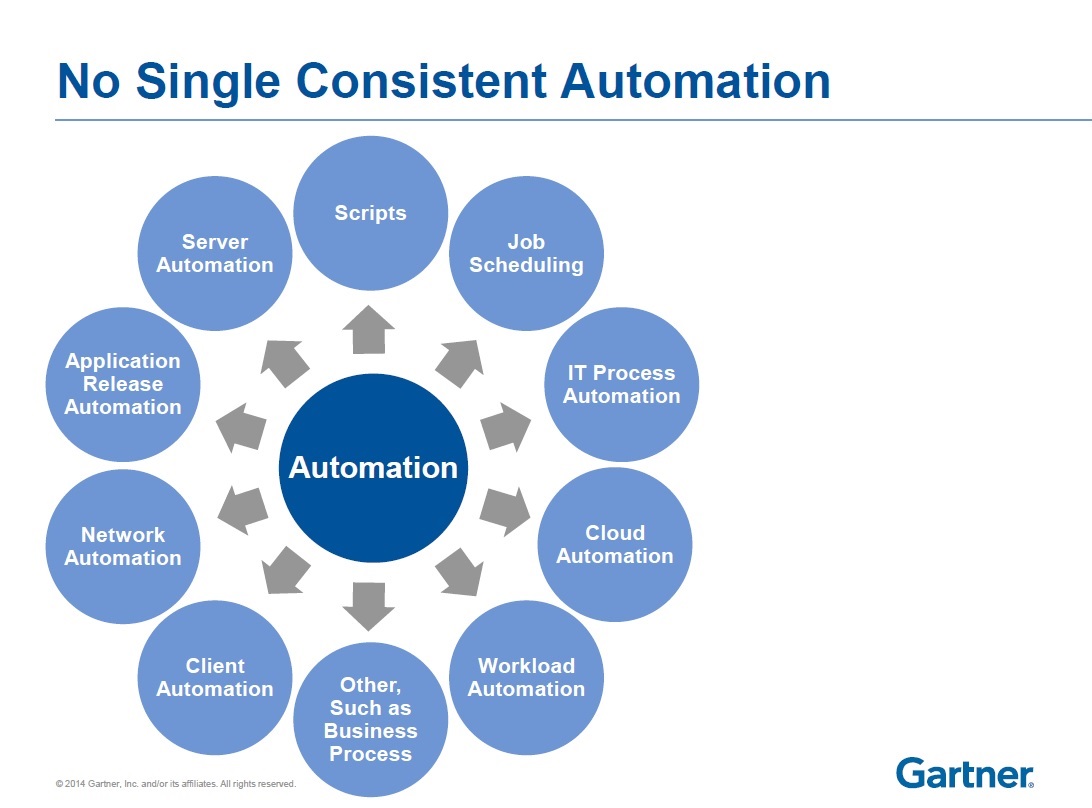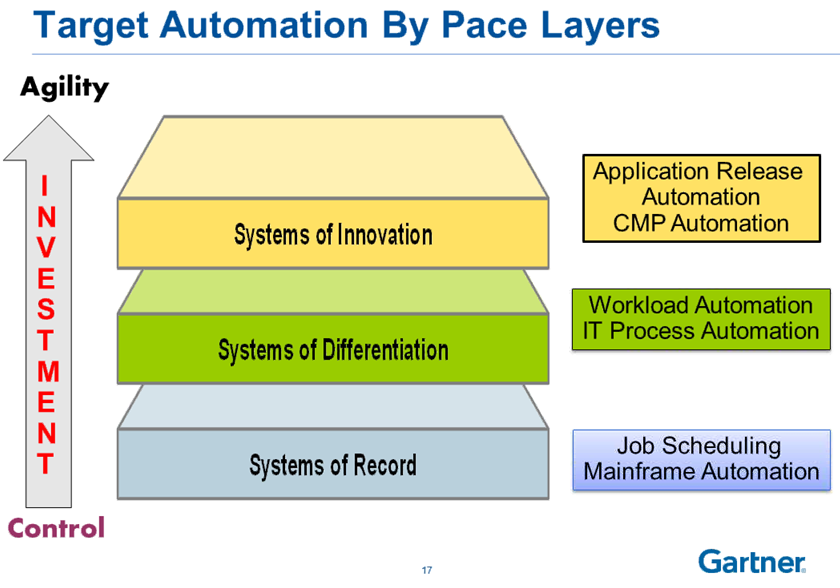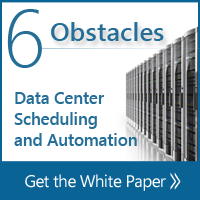Opportunistic Automation
Last month we had the pleasure of attending the Gartner Infrastructure & Operations Management Summit in Orlando, Florida, where Gartner VP and distinguished analyst Ronni Colville gave a presentation entitled Automation: The Linchpin for Cloud & Data Centers.
Conceptually, Colville presented the idea that IT organizations are taking an “opportunistic” approach to automation by identifying individual automation opportunities as they arise and implementing platform-specific tools to solve a specific problem. This fragmented approach to IT automation is not an “enterprise grade” strategy. Nor is it scalable. It introduces increasing levels of complexity, higher TCO and lacks any form of enterprise-wide governance.
We presented a very similar concept in a post earlier this year to communicate the problem that enterprise job scheduling and workload automation solutions like ActiveBatch solve. As referenced in an older post, rather than taking an “elemental” approach, organizations must adopt an “architectural” strategy whereby “point” scheduling tools are unified within an enterprise automation solution. An “architectural” strategy lays the foundation for a policy-driven automation strategy that drives governance, visibility and control across the organization. Cross-application, -platform and -departmental workflows are planned, dependencies identified and processes automated end-to-end.
Whether it’s “opportunistic vs. systematic” or “elemental vs. architectural,” IT infrastructure and operations teams continue to wrestle with silos of automation, and the opportunity exists for IT leaders to harness the elemental deployment of point automation solutions to streamline architectures and gain efficiencies by reducing complexity.
According to Gartner, by 2016, 75% of large enterprises will have more than four diverse automation technologies within their IT management portfolio, comprising any one of a number of solutions tailored specifically for the automation of one and/or multiple process types:

Of these, enterprise job scheduling and workload automation solutions continue to represent the largest percentage of the IT automation market and are continued to be looked upon by many within the marketplace as the “uber automation management solutions” by which to incorporate the automation of other process types outside of job scheduling and workload automation, such as infrastructure provisioning, applications release automation, DevOps and cloud orchestration, Colville stated. Whether this strategy represents the best course of action almost certainly differs from one IT organization to another, but vendors within the marketplace…ourselves included…have started to see and address this trend, either through the development of new capabilities or via direct integration with other automation solutions.
Reducing Scripts
Yet for most IT organizations, scripting remains the de facto standard of automation, and for the majority of our customers, the starting point for adopting an “architectural” approach to IT automation. For most, taking an “architectural” approach doesn’t require an all-in strategy whereby the organization is consolidating scripts and “point” scheduling solutions in one step. Instead, many of our customers adopt a phased strategy whereby they start with “script discovery,” consolidate these scripts within a single scheduling framework and then identify additional application, platform and process types that can be automated as well.
Another way to consider automation’s role across the IT organization is by considering the automation of systems by their role and rate of change. Gartner’s pace layering model is a methodology for categorizing applications and developing a differentiated management and governance process that reflects how they’re used and rates of change. In the past, IT organizations have had a single strategy for selecting, deploying and managing applications. They may have had methodologies for classifying applications by value or technological viability, but they did not recognize that applications are fundamentally different based on how they are used by the organization.
IT automation can also be viewed along the same lines by categorizing the types of technologies and processes an IT organization is automating. Systems of records, i.e. legacy applications and mainframe systems, represent the bread and butter of traditional job scheduling and batch processing, whereas much of the market has taken the next evolutionary step and has begun incorporating the automation of custom-built and/or 3rd party .NET/Java-based applications via workload automation solution. Lastly, Systems of Innovation, such as cloud-based applications and infrastructure, represent the inclusion of new forms of automation, such as application release automation and cloud infrastructure provisioning to allow an IT organization to automate and streamline build and release processes while dynamically provisioning virtual and cloud-based instances to match workload processing needs.

This same strategy applies when evaluating enterprise job scheduling and workload automation solutions. Adopting an “architectural” approach typically means considering the end-to-end automation of process types that span the various systems within the pace layering model. Ensuring that any IT automation solution has the ability to span these various systems, such as the ability to support Web Services, APIs and .NET Assemblies to integrate and automate processes within “Systems of Differentiation,” is important. This lays the foundation for implementing an automation solution that is built for change. As an IT organization continues the upward maturation to implement systems that provide a competitive differentiation for the business and add agility to the IT organization, ensuring your IT automation strategy can mature in parallel becomes increasingly important.
The end result is IT automation becomes a strategic priority that drives alignment and collaboration between organizational islands within the IT department and, according to Colville, enables the marriage of revenue and productivity by reducing IT operational costs while improving staff productivity.

